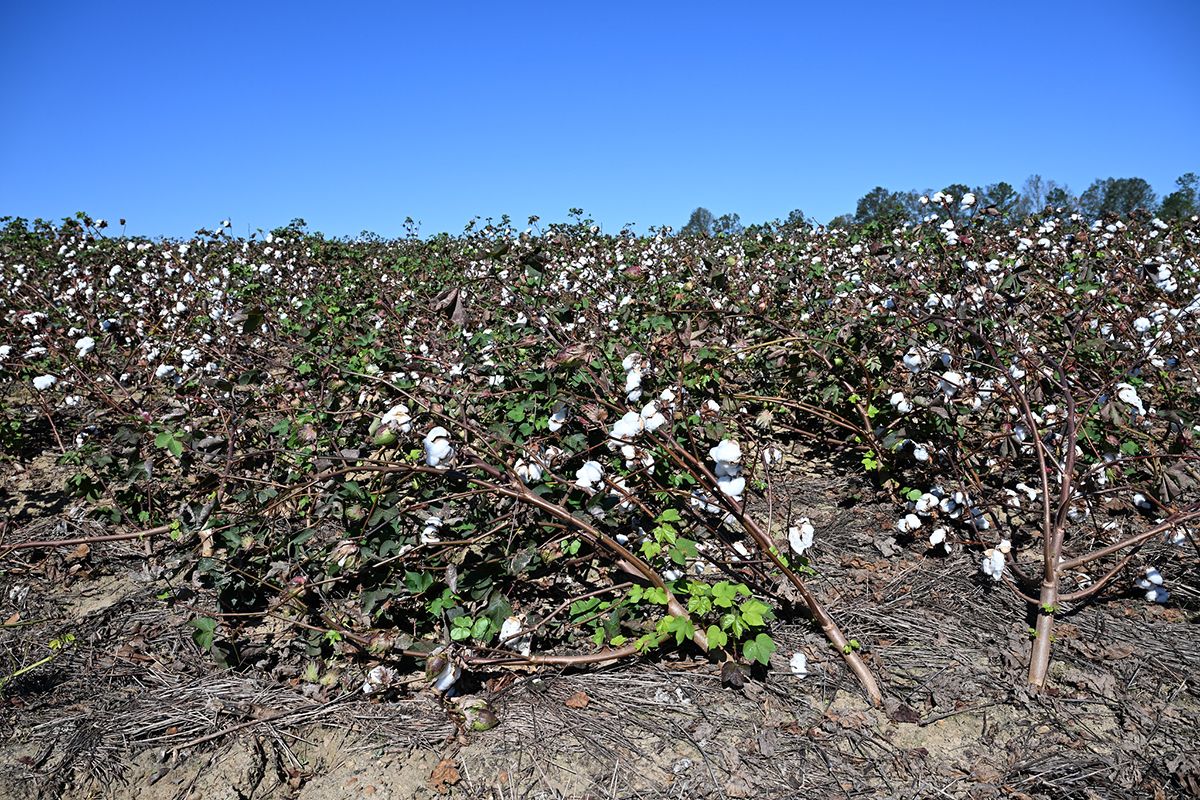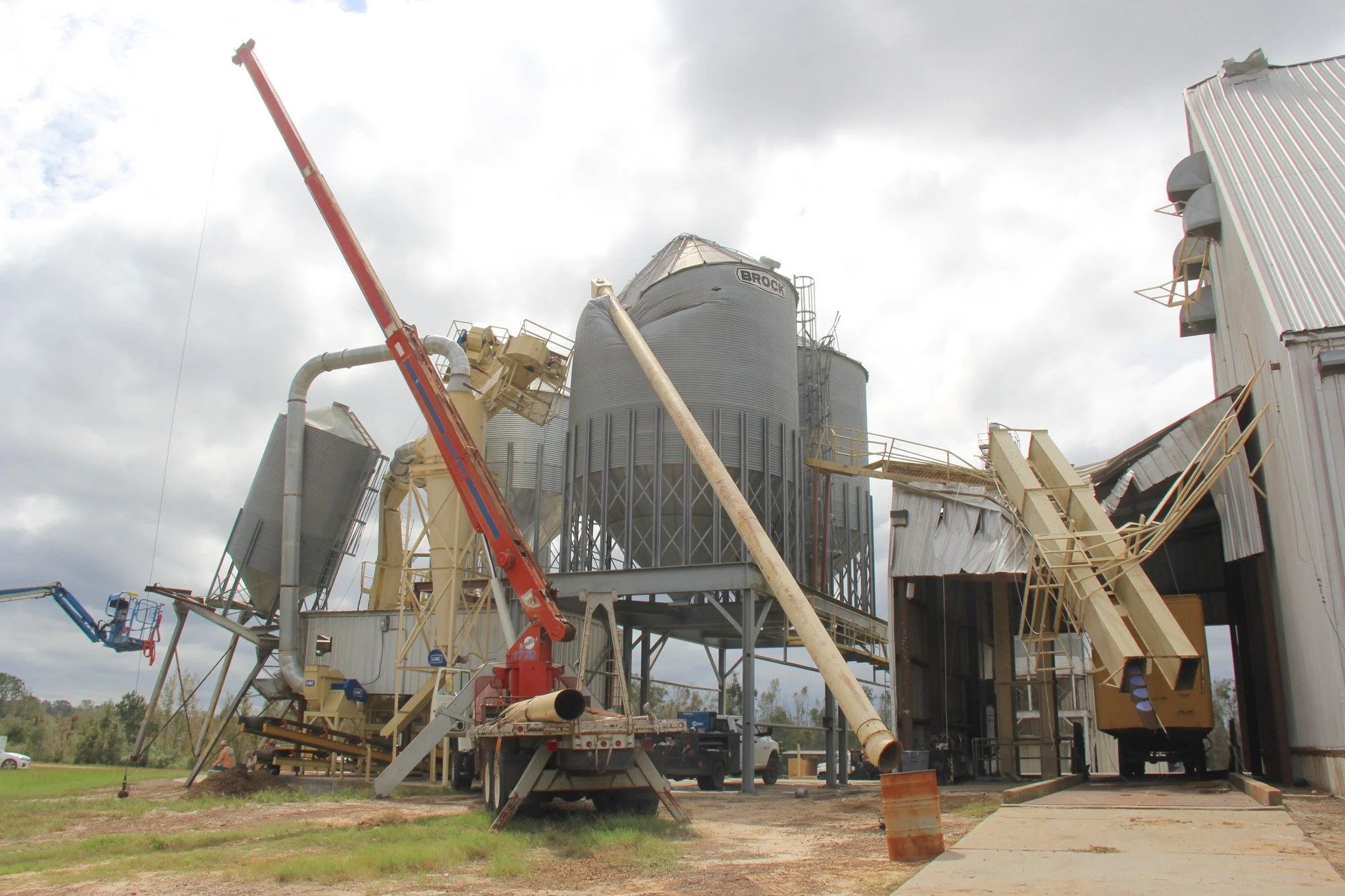After the storm
Georgia farmers push for policy reform in the wake of Hurricane Helene
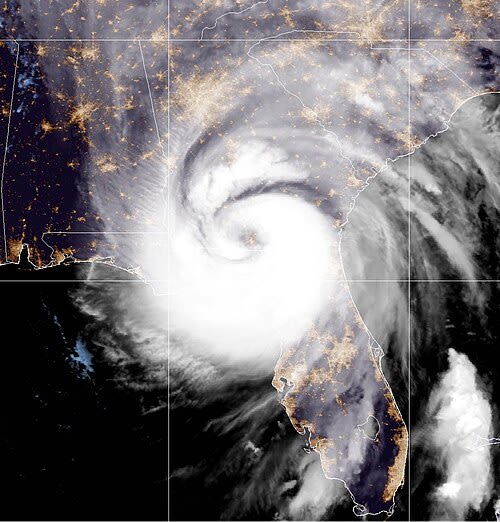
Hurricane Helene devastated Georgia’s agricultural sector in September 2024, leaving a lasting mark on both the land and the people who tend it. The storm’s aftermath highlighted vulnerabilities in Georgia’s farming industry and the need for more robust safety nets. Months after the hurricane, farmers say they still need help.
Editor’s note: This story was originally published on Dec. 19, 2024, a few months after Hurricane Helene moved across Georgia with catastrophic winds. This version of the story, updated in April, appears in the 2025 issue of the CAES Almanac. Some information may reflect prior conditions and perspectives.
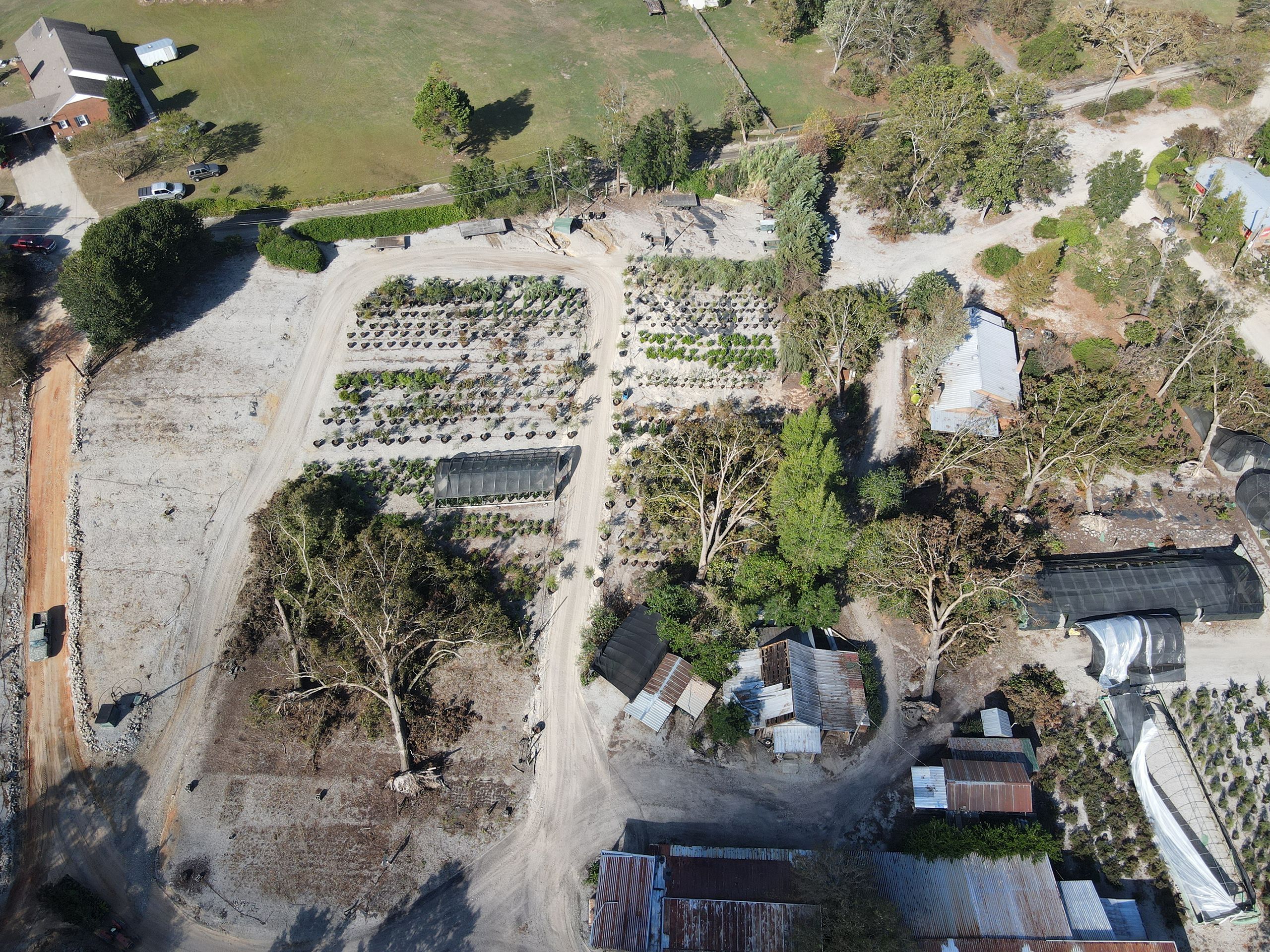
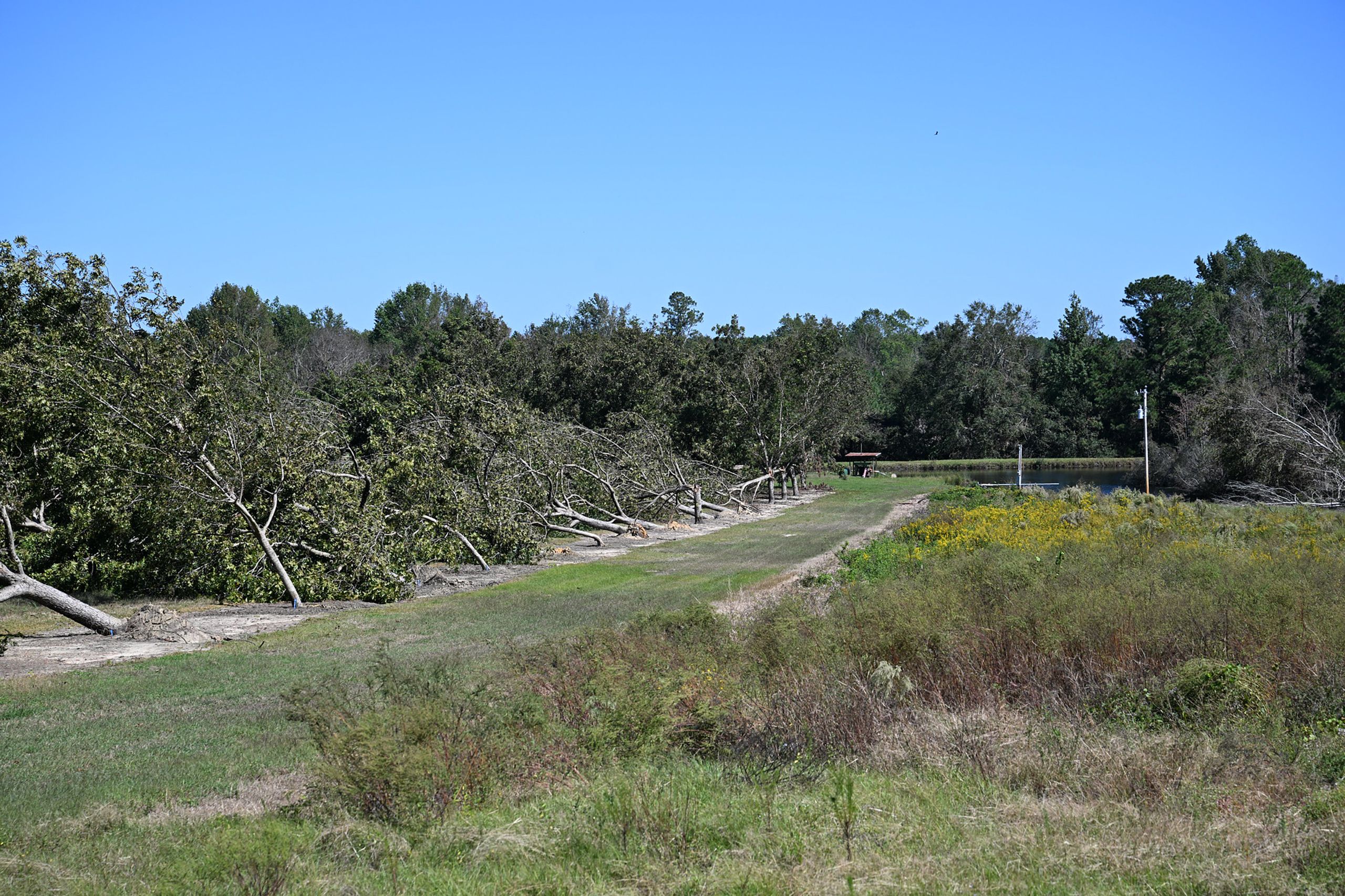
Cotton plants, just weeks shy of harvest, incurred substantial damage from the hurricane. (Photo by Chris Groskreutz, USDA)
Cotton plants, just weeks shy of harvest, incurred substantial damage from the hurricane. (Photo by Chris Groskreutz, USDA)
The hardest hit commodities
The agricultural sector faced significant challenges, with total economic losses estimated at $5.5 billion. Every crop in Georgia was affected, but key commodities — timber, pecans, poultry, cotton, nursery and livestock infrastructure — bore the brunt of the damage, said Timothy Coolong, interim assistant dean for University of Georgia Cooperative Extension in the College of Agricultural and Environmental Sciences.
For cotton farmers, the timing was particularly cruel, hitting just before harvest and causing 50% to 60% losses. “It turned an already tough year into a financial crisis,” said UGA Extension agronomist Camp Hand.
Pecan growers, already struggling with low prices and trade disruptions, faced their third major storm in 18 months, said CAES horticulture Professor Lenny Wells.
Overwhelming damage to the timber industry affected approximately 1.47 million acres of Georgia’s timberland, leading to an estimated $1.28 billion loss.
The destruction compounded existing financial challenges, setting the stage for long-term struggles.
(Photo courtesy of Weathered but Strong)
(Photo courtesy of Weathered but Strong)
Economic ripple effects
With significant global supply chain disruptions already in play, the storm’s impact exacerbated matters beyond the fields, said Michael Adjemian, a professor in the CAES Department of Agricultural and Applied Economics.
“Supply chain disruptions from reduced production due to lost crops, damaged barns and destroyed equipment ripple outward — affecting feed suppliers, transportation networks and packaging facilities,” Adjemian said.
Lower farm incomes also translate to reduced spending in rural communities, amplifying the economic burden.
“These disruptions further increase production costs along the chain, leading to higher prices for consumers,” Adjemian added.
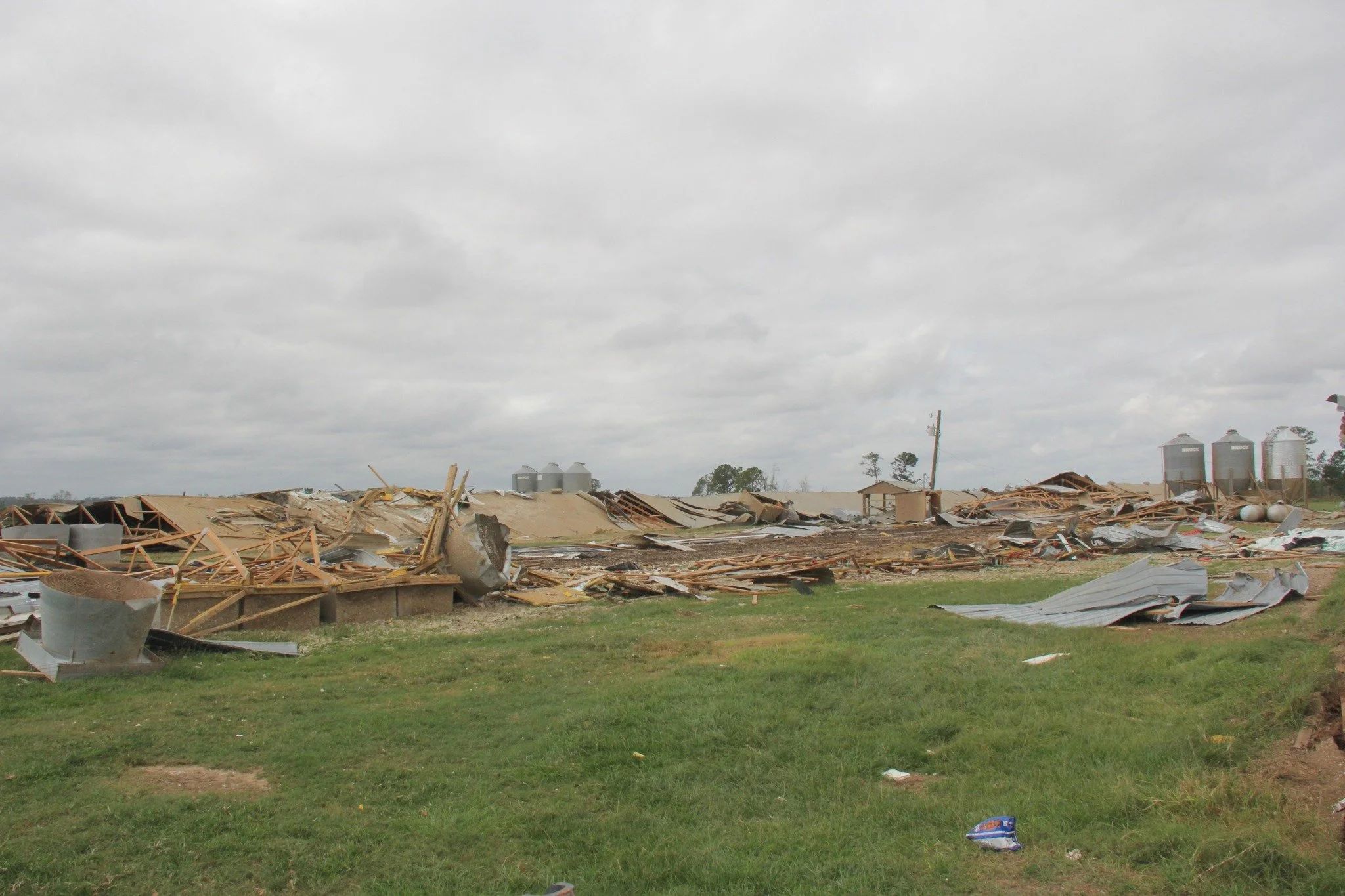
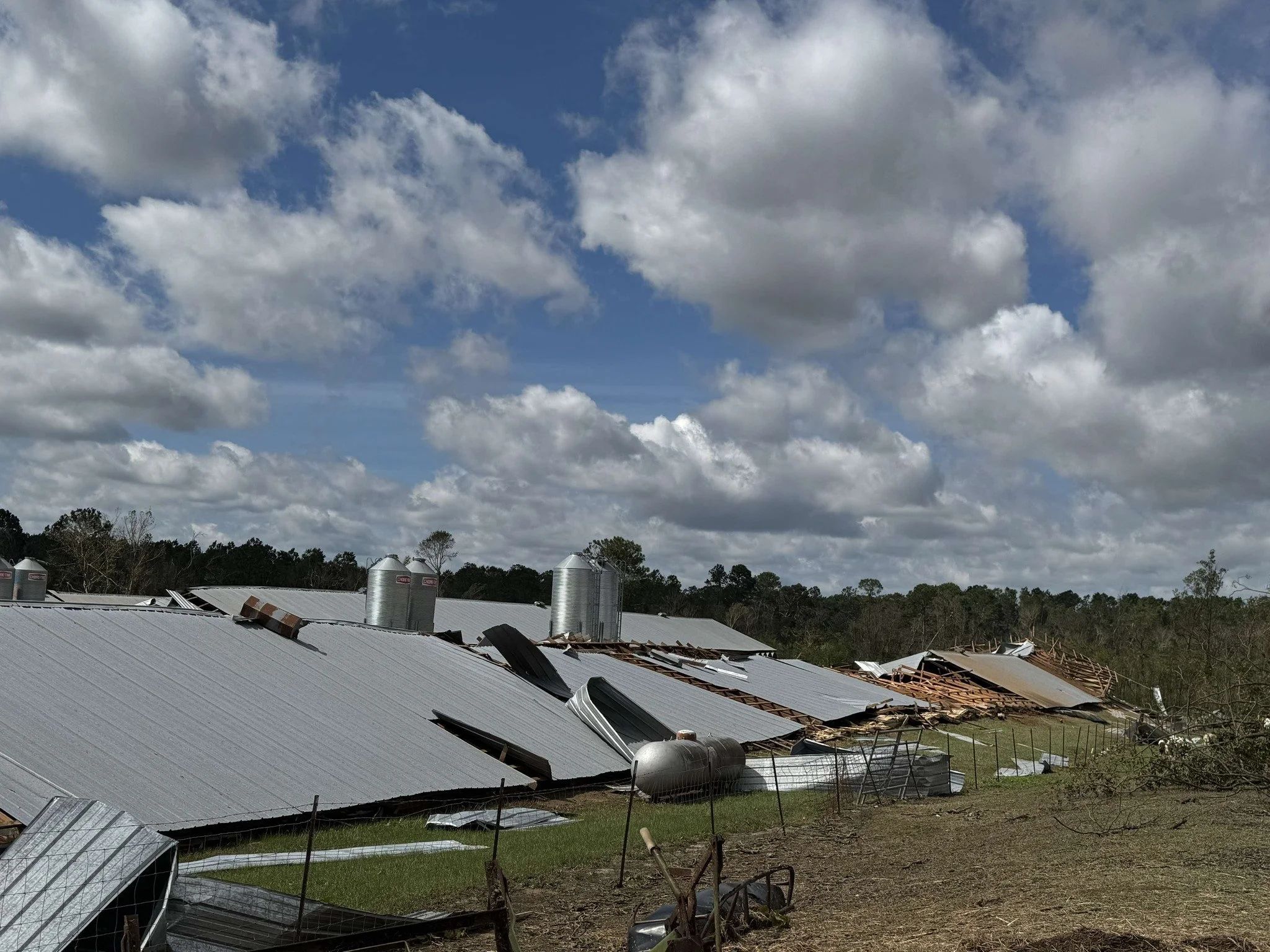
Rebuilding and resilience
In the immediate aftermath of the storm, farmers prioritized helping their neighbors before tending to their own land, Hand said.
As farmers worked to rebuild, the agricultural community rallied together. Chris Hopkins, a cotton grower in Toombs County, recalled thinking recovery was impossible after losing half his crop overnight.
Chris Hopkins, a cotton grower in Toombs County, Georgia. (Photo courtesy of Georgia Cotton Commission)
Chris Hopkins, a cotton grower in Toombs County, Georgia. (Photo courtesy of Georgia Cotton Commission)
“But every day we gained a little more confidence that maybe, just maybe, we could make it through,” said Hopkins, a CAES graduate with a bachelor’s degree in crop science and a master’s degree in plant protection and pest management.
In addition to rebuilding their own communities and farming operations, producers have played a critical role in advocating for disaster assistance, opening their farms to legislators to witness the devastation firsthand.
Disaster aid and policy gaps
In December 2024, Congress secured $10 billion in economic assistance for Georgia farmers through U.S. Department of Agriculture disaster programs, but distribution has been slow. Georgia growers also are waiting for $21 billion in relief from a much larger $100 billion federal package approved last year.
“For our operation, that first wave of financial aid covered about a third of our total costs,” Hopkins said.
Georgia Gov. Brian Kemp’s budget, signed in March, provided $285 million in disaster relief for growers through the SAFETY 24 Low-Interest Loan Program.
The Weathered But Strong Georgia Hurricane Relief Fund, a collaborative campaign of more than 40 agricultural organizations, raised $1.74 million to assist affected farmers.
Tim Coolong (Photo by Sean Montgomery)
Tim Coolong (Photo by Sean Montgomery)
A call for policy action
UGA agricultural climatologist Pam Knox warns that extreme weather events will likely become more frequent, and CAES experts agree that stronger agricultural policies are needed.
“Sometimes there’s a disconnect between policy and the realities of agriculture and rural communities,” Coolong said.
“Disasters like this expose how broken the system is but also give us an opportunity to advocate for meaningful change,” Hand added.
